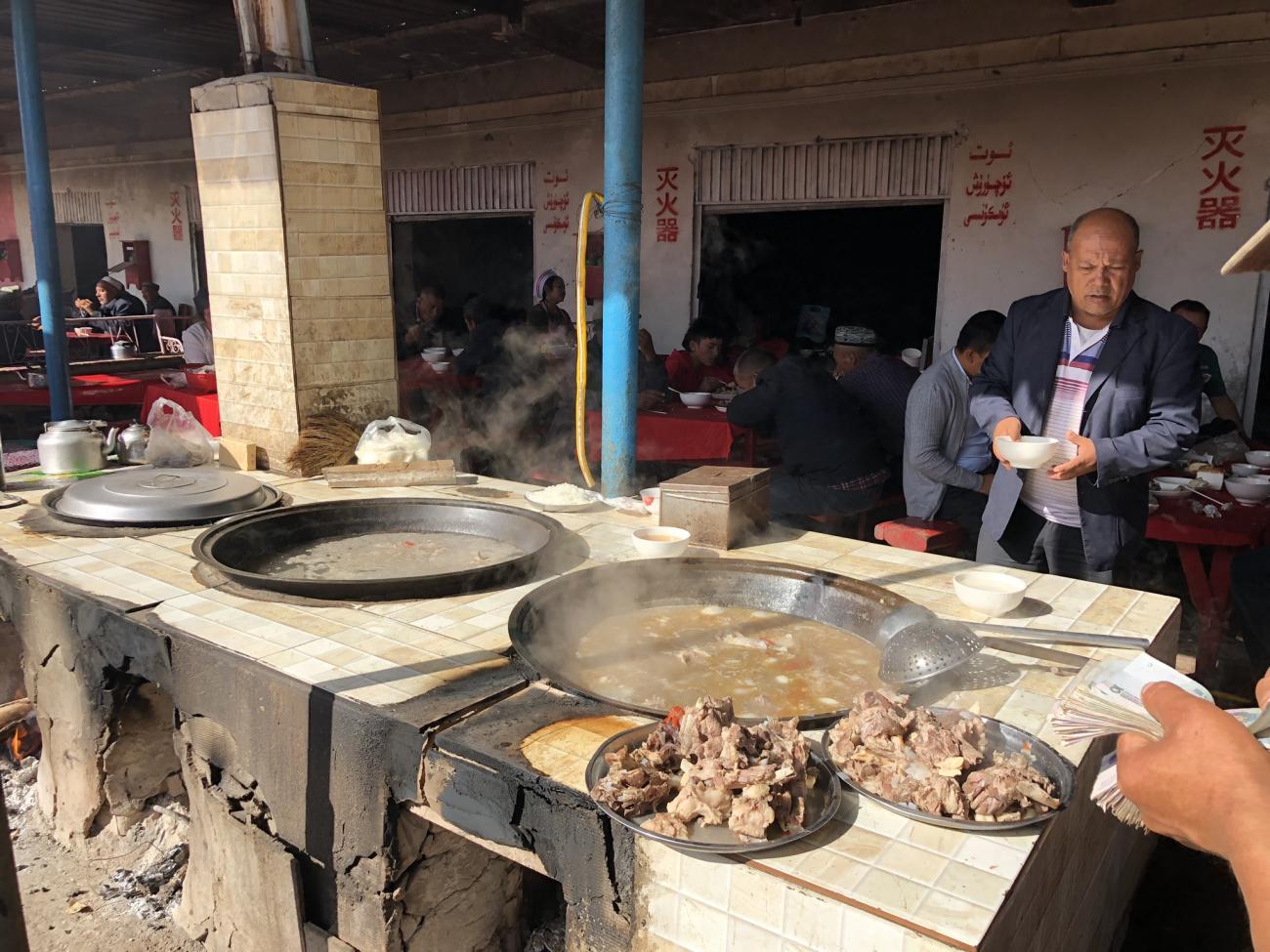For centuries Kashgar’s Sunday Livestock Market was the place to buy your camels and horses before setting off over the high passes leading you to the Tien Shan or Pamir mountain ranges as you took your goods to new markets. Now however the roads are new and shiny as China’s lorries head over the high mountain passes loaded with goods made in China. This means that horses and camels have become rather outdated. So are the Kashgar markets still worth going to or are they full of spare tires and microchips instead of tea blends? The good news is that they are still very much worth the trip but definitely reflect the new needs of the local market.

First my guide and I drove out of the city to the new site of the Kashgar Livestock market. As soon as you step out of the car you can see why they moved it out of the city centre, the pungent smell of animals in warm weather envelops you. We made our way into the market proper where rows of livestock are inspected by cheery men who are completely at home amongst the barrage of noise and dust constantly being kicked up. There are no longer camels and horses being sold on a regular basis as they aren’t used to cross the mountains or deserts anymore. My guide tells me that even donkeys were in decline until the Han Chinese taste for donkey was revived and now the donkey section is the hot part of the market.

So today the market is mostly about food. Luckily there are a range of restaurants in a long building offering up all types of fresh lamb dishes. My guide orders us up a range, there are samsa -baked dumplings filled with lamb mince- steamed dumplings filled with lamb mince, a kind of fried rice with diced lamb, a clear lamb broth and hunks of lamb you get to pull apart with your hands. Maybe just have fruit for breakfast at the hotel? Joining in with the local farm workers and families who have come for their Sunday brunch was my favourite way to experience the market and you can’t say the food isn’t fresh!

We next went to the far more pleasant-smelling Sunday Bazaar; as with the Livestock market modernised and placed under a cavernous roof providing relief from the sun. It is split into sections and I make a beeline for the teas and spices. Here the fragrant smells of cumin, turmeric, and cardamom fulfil my silk road dreams. I am like a kid in a candy shop and only regret my purchases when my clothes smell of cumin for the next 10 days. I also enjoy walking round the local craft stalls where my guide explains the symbolism and relevance of each craft. Breathing life into the history of each item and giving them a much better story than simply pretty souvenirs!

Finally, we head to the fruits and nuts section where we refresh ourselves with fresh pomegranate juice and the free samples of dried fruits and nuts offered by the friendly stall holders. I first tasted pomegranate when I came to China for the first time almost 11 years to the day and the taste takes me back. It amazes me that there is a country as vast as China that after travelling there for 11 years I am still visiting new and surprising corners of it. It may not be the Kashgar of history but it is a living city that is changing with the needs of the modern silk road, just as it always has done.
